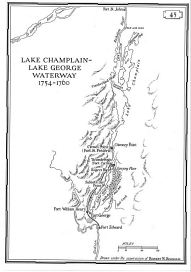Look at Illustration 7-1 in your text. These are examples of the environmental influences affecting your ancestor's lives. We've already discussed jurisdiction and the fact that records remain in the place where they originated unless they have been moved to a preservation facility elsewhere.
Chapter 7 also discussed the affect topography, life events, time, and history will have on your ancestors' lives. Take time to carefully study the environment of one or two of your ancestors very closely in order to apply these principles to your research.
Successful genealogists know that it's important to study geographical maps of the areas where their ancestors lived and traveled. Maps often provide us with the picture that is "worth a thousand words," both in terms of the events and the forces that motivated them.
Maps not only help us to understand movement patterns and interpersonal relationships, but they also help us to recognize the significance of causes and effects, both in terms of geography and in terms of the times in which the people were living.

But first you must know what to look for in the maps you are studying, and you must find maps that reflect the period which interests you. One very good book is entitled the Atlas of American History. It is a reference book found among history collections. It lists the names of towns as they were named at the time the map was made. For example, Pittsburgh, Pennsylvania, was known as Fort Pitt and before that Fort Dunmore. If you didn't know the earlier location names, you would be looking for the wrong name on the maps. So learn about other names that surround the place you seek so you can recognize your clues.
|